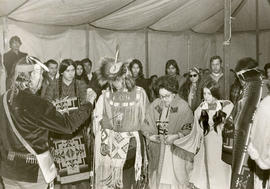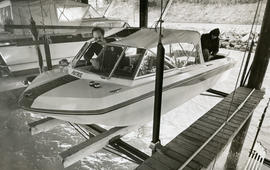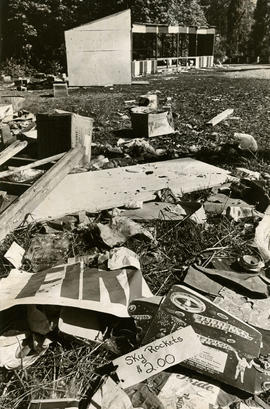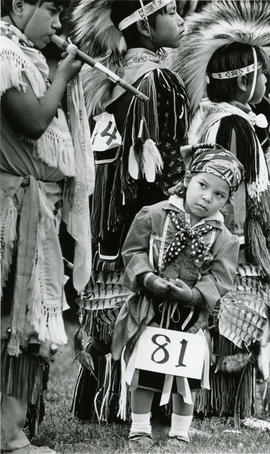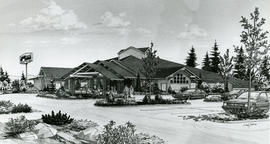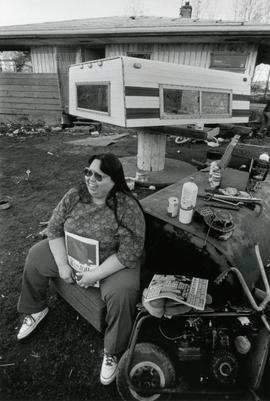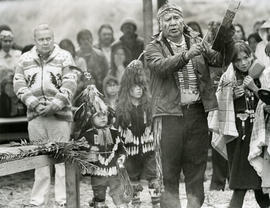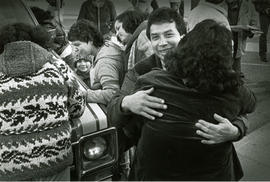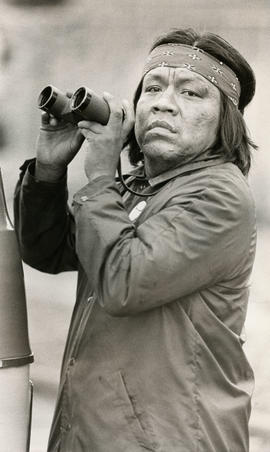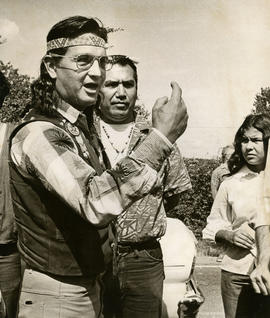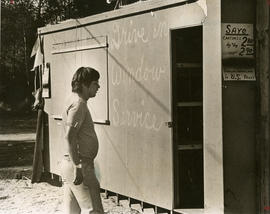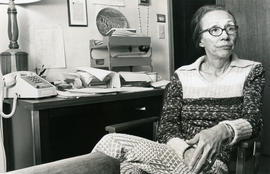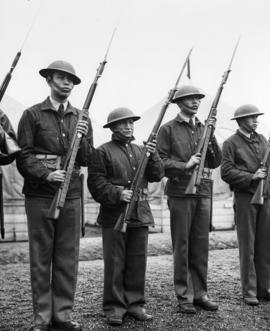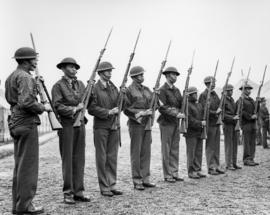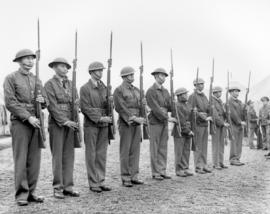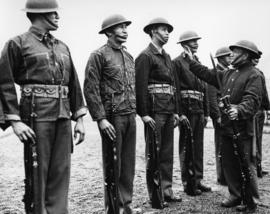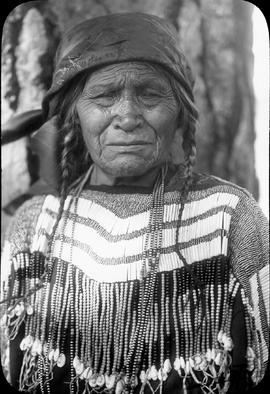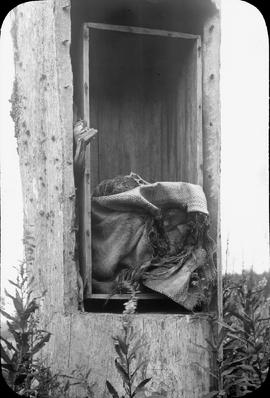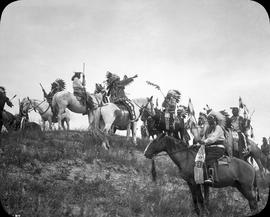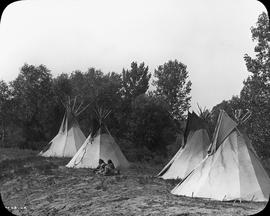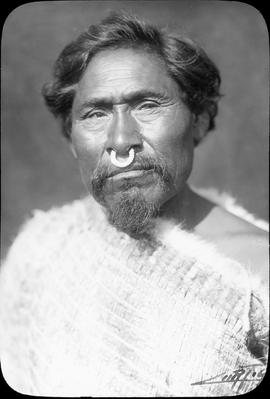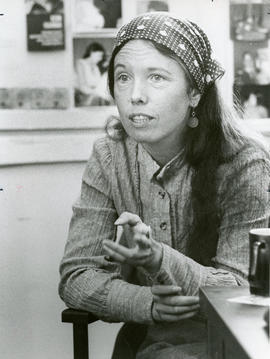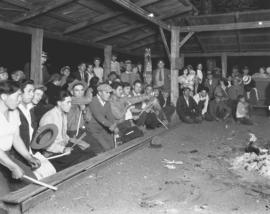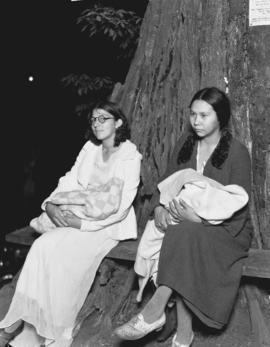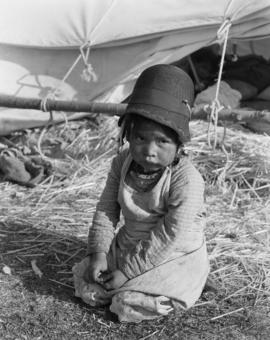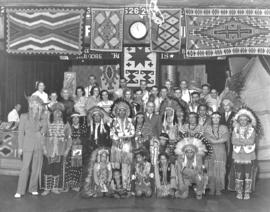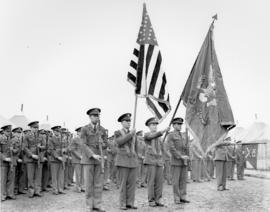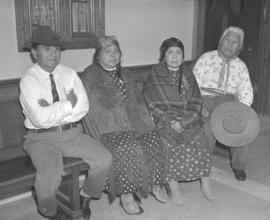Nine Native American members of Company B 163rd Infantry, a Montana National Guard regiment composed primarily of Sioux Indians, stand for inspection at Camp Murray in December of 1940. This unit reformed in 1922, the original Company B had also been comprised of Native Americans and served in World War I. Partially because of the outstanding volunteer effort of Native Americans during World War I, in 1924 Congress granted U.S. citizenship to all Native Americans. One result of this action was that native men between the age of 21 and 35 became eligible for the draft under the Selective Training and Service Act of September 16, 1940. However, most Native Americans served on a volunteer basis. More than 44,000 of them, out of a total population of less than 350,000, served with distinction between 1941 and 1945. (T. Times 12/11/1940, pg. 1)
Indians of North America--Sioux tribe; Montana National Guard, 163rd Infantry, Company B--Camp Murray; Ethnic groups--Indians of North America;
